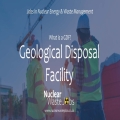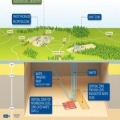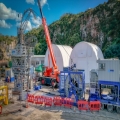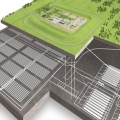A Geological Disposal Facility – or GDF – is the best solution to permanently dispose of our most radioactive waste. We’ve developed a robust process for choosing where a GDF could be built and at the moment, we’re actively engaging with communities to see if hosting a GDF would be right for…
GDF
GDF News
Geological disposal involves isolating radioactive waste deep underground, inside a suitable rock volume to ensure that no harmful quantities of radioactivity ever reach the surface environment. A GDF will be a highly engineered structure consisting of multiple barriers that will provide…
Why choose a Geological Disposal Facility (GDF) to dispose of higher activity radioactive waste? It provides multiple barriers of protection, such as natural geological formations as well as engineered barriers, ensuring long-term isolation and safety of both people and the environment. In this…
French radioactive waste management agency Andra has applied for a construction licence (DAC) for the planned Centre Industriel de Stockage Géologique (Cigéo) deep geological disposal facility for high-level radioactive waste.
Andra plans to construct the Cigéo repository - an…
Existing boreholes at the Rosemanowes quarry in Cornwall, southwest England, have been successfully sealed by Nuclear Waste Services (NWS) in a demonstration of the technology it plans to use to seal boreholes drilled during the search to find a suitable location for a Geological Disposal…
Finland is building the largest and most powerful nuclear reactor in Europe - and may have worked out what to do with spent nuclear fuel once and for all.
…
Short video outlining the types of rock that are being considered as suitable to host a Geological Disposal Facility (GDF)
…
USA-headquartered KBR has been awarded a contract to support the UK's Nuclear Waste Services (NWS) in developing a Geological Disposal Facility (GDF). Such a facility, NWS says, will create more than 4000 jobs for the local host community.
Through the three-year agreement, KBR - a…





